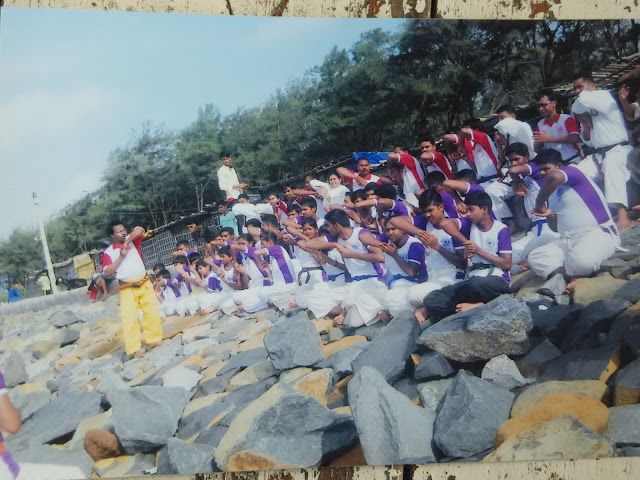TIGER KARATE ASSOCIATION INTERNATIONAL IS A INSTITUTE WHERE WE TEACH PEOPLE FOR SELF DEFENSE.
Monday, 27 June 2016
Monday, 6 June 2016
FOOT POSITIONS FOR KICKING
FOOT
POSITIONS FOR KICKING
Kicking
is your most useful defense. Beyond what you need to
know for achieving the
belt degrees, you should train in
kicking techniques to build a permanent
response to attack. It
takes practice to get to the point of automatic kicking
response,
but I can not overemphasize the importance of such training
for
practical, lasting, effective self-defense knowledge.
What
is being taught here is which part of the foot is used as a
striking weapon,
not how to kick. These are the five basic
striking areas and they will be used
in a number of different
ways and in different combinations.
Although
kicking practice with a partner is most safe when
you train barefoot (as shown)
you must keep in mind that you
are more likely to use the kicks in actual
self-defence when you
are wearing shoes.
SAFETY AND CONTROL
SAFETY
AND CONTROL
Teacher
and student must have the same approach, if training
accidents are to be
avoided. The elements which insure safety
in training are these: Safety must be
considered a desirable
aspect of training. The student must have confidence in
the
efficacy of the techniques. There must be mutual respect
between teacher
and students and among the students.
In
the old-fashioned method of training still use by many
teachers, safety was not
an important consideration. Students
who were hurt of injured in training were
expected to bear
their injuries in brave silence and such behavior made them
seem more “worthy” of the “honor” of being taught unarmed
fighting. When actual
hand to hand combat was reasonable.
When teacher and students consider safety
as an important
element of training, safety rules will be taught and applied.
MUSCLE REACTION: BODY REACTION
MUSCLE
REACTION: BODY REACTION
There
are automatic reactions to force which you can take
advantage of if you
understand them. In judo and Aikido it has
been referred to as the “giving way”
principle, but that does
not adequately describe the full range of action and
reaction
which it means to explain.
You
can experiment in this fashion: do not tell your partner
what you are trying to
do and you will have a completely
unrehearsed demonstration of muscle reaction.
Ask
him to make a fist and instruct him to push up as hard as
he can, while you
push down on his fist.
If
you suddenly remove your hand, his fist will rise quickly as
the result of his
own action.
Body
reaction is the same principle applied on a larger scale. If
you ask your
partner to pull back while you pull him forward,
and then suddenly release your
grip, he will move back-ward
as the result of his own action.
Subscribe to:
Posts (Atom)



































































